Why Temperature Control Matters More Than You Think
How to control temperature effectively requires mastering five key steps: understanding heat transfer principles, implementing accurate monitoring systems, optimizing your building envelope, deploying smart HVAC controls, and fine-tuning specialized environments for specific needs.
Quick Temperature Control Guide:
- Measure accurately - Use calibrated thermometers at equipment level, not just room temperature
- Seal air leaks - Focus on doors, windows, and ductwork to prevent energy loss
- Adjust airflow - Balance intake and exhaust vents in small increments
- Monitor continuously - Check readings regularly and maintain equipment
- Optimize for your space - Different environments need different temperature ranges and humidity levels
Temperature control isn't just about comfort - it's about energy efficiency, product quality, and safety. Whether you're managing a funeral home, restaurant, or any facility with critical storage needs, poor temperature control can lead to spoiled products, higher energy bills, and regulatory violations.
HVAC systems account for about 50% of total energy consumption in commercial buildings, while people spend 90% of their time indoors during summer and 97% during winter. With stakes this high, getting temperature control right matters for both your bottom line and the people you serve.
Modern temperature control combines traditional methods like proper insulation and ventilation with smart technology. Digital controllers can predict occupant comfort with 85% accuracy using facial skin temperature, while automated systems adjust settings based on real-time data.
I'm Mortuary Cooler, a national supplier of mortuary cooling equipment with experience in critical temperature control applications. Throughout my career helping funeral homes maintain precise storage conditions, I've learned that mastering how to control temperature requires both technical knowledge and practical solutions custom to each facility's unique needs.
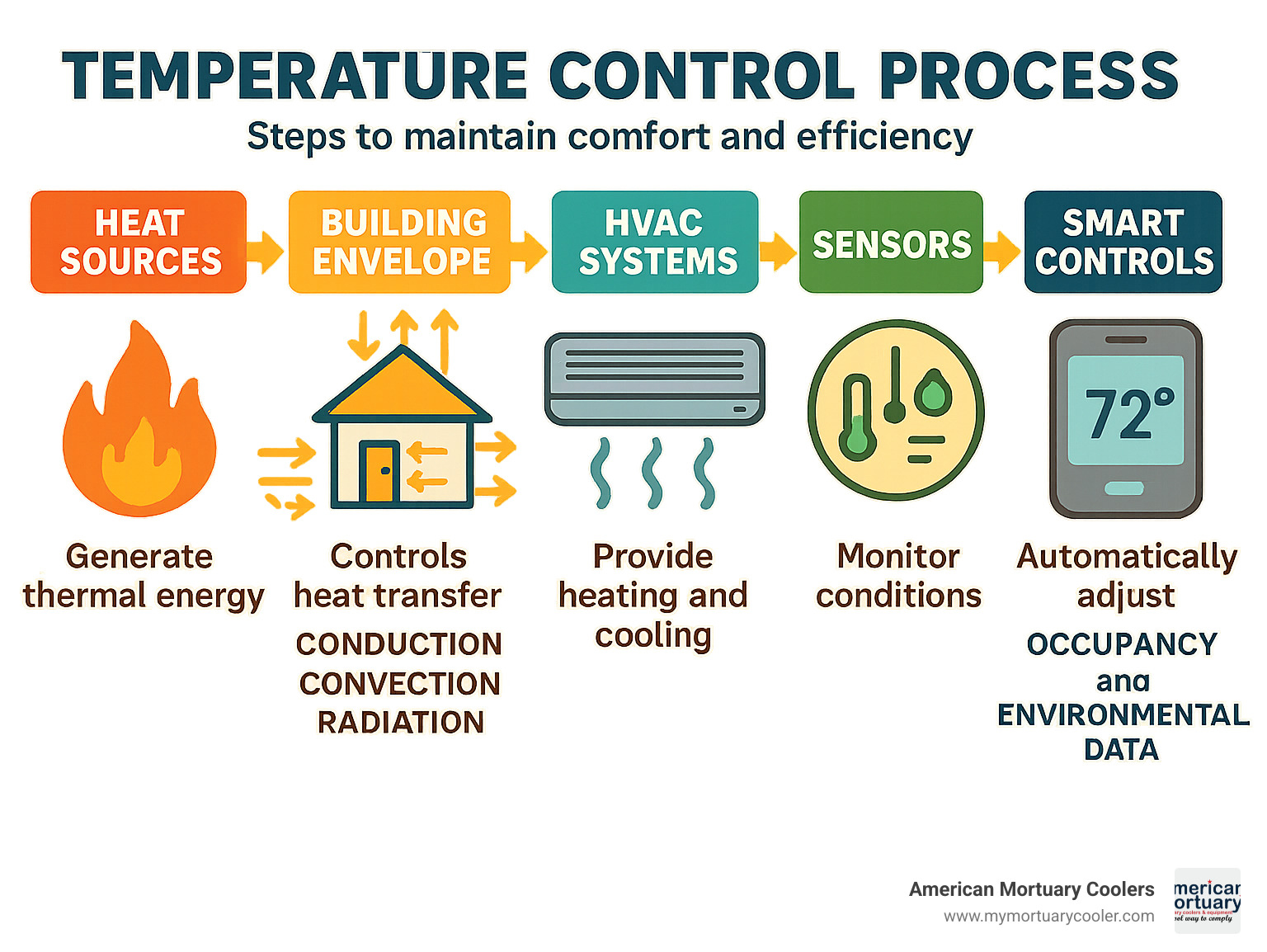
Handy how to control temperature terms:
Step 1: Master the Science Behind Heat Flow
Think of your building like a giant heat-moving machine that never stops working. Heat is constantly trying to balance itself out - flowing from warm areas to cool ones through four main pathways. Once you understand these pathways, you'll know exactly how to control temperature in any space.
Conduction is direct heat transfer through solid materials. In your facility, heat conducts straight through walls, windows, doors, and floors. A poorly insulated wall becomes a heat highway - letting precious warm air escape in winter and hot outdoor air sneak in during summer.
Convection happens when air itself becomes the delivery system for heat. Hot air naturally rises while cold air sinks, creating invisible circulation patterns throughout your building. This is why your upstairs rooms feel stuffy while the basement stays cool.
Radiation works like an invisible heat beam - no direct contact needed. The sun warming your skin through a window is pure radiant heat. Inside your facility, everything from light fixtures to warm equipment surfaces radiates heat, affecting your overall temperature load.
Evaporation pulls heat away when water evaporates. When indoor humidity gets too high, evaporation slows down, making people feel warmer even when the thermostat reads the same temperature.
Research shows that radiation accounts for about 60% of total body heat loss, while conduction and convection handle roughly 15% each, and evaporation takes care of the remaining 22%. These numbers tell you where to focus your energy when improving temperature control.
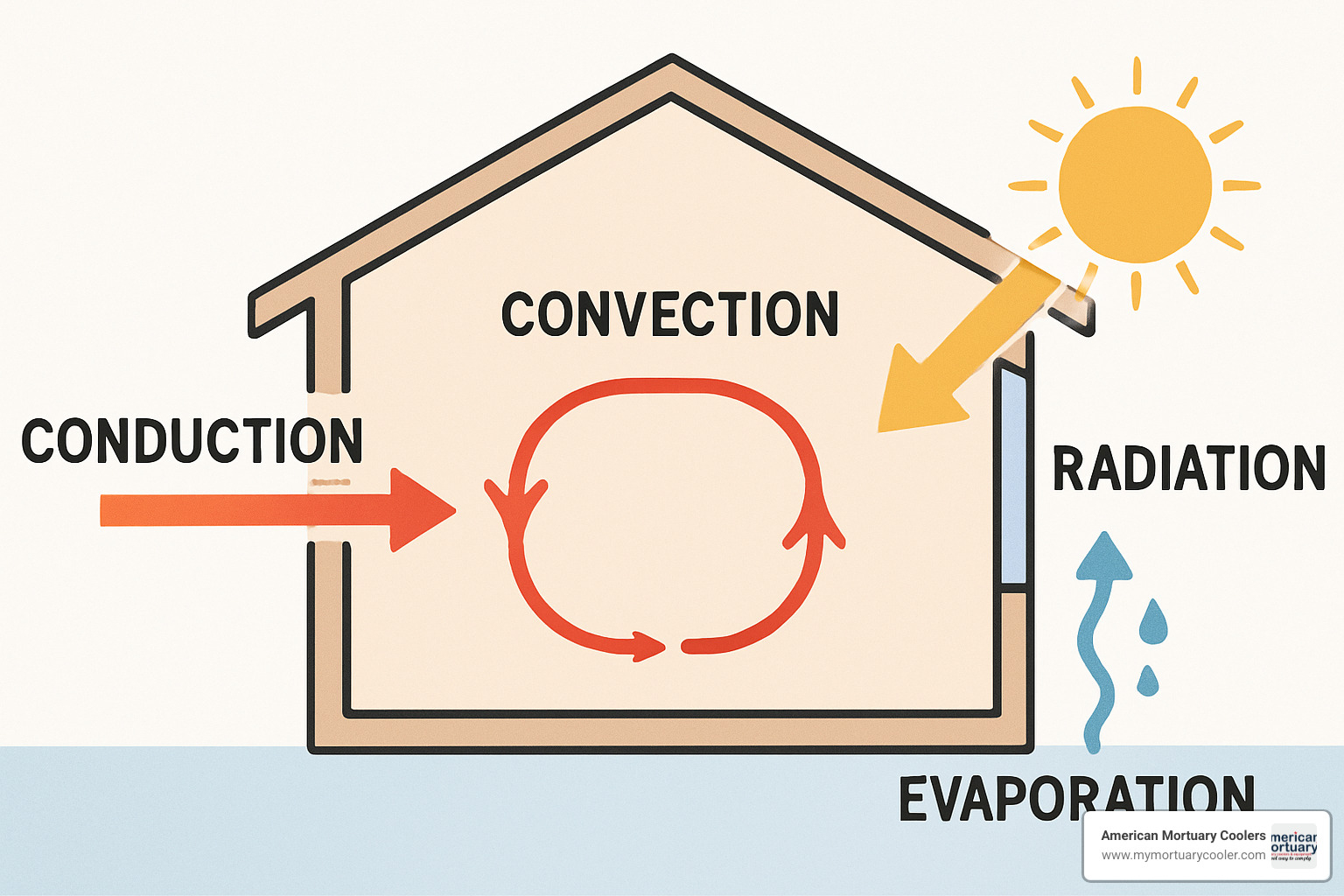
Why understanding heat flow is the first key to how to control temperature
Your building envelope - walls, roof, windows, doors, and foundation - acts like a thermal boundary between inside and outside conditions. Every tiny gap, crack, or poorly insulated section creates an express lane for unwanted heat transfer.
Scientific research on heat transfer confirms what HVAC professionals have known for decades: you can't effectively control temperature without understanding these basic heat movement principles.
Load calculations help you figure out exactly how much heating and cooling power you actually need. These calculations consider your building size and construction materials, the number of people using the space, heat generated by equipment and lighting, solar heat gain streaming through windows, and air leakage through cracks and gaps.
Seasonal shifts completely change your temperature control game. Summer brings intense solar heat gain and higher outdoor temperatures. Winter flips the script with heat loss through your building envelope. The smartest temperature control strategies work with these seasonal changes rather than constantly battling against them.
Step 2: Measure & Monitor — The Backbone of How to Control Temperature
Think of temperature measurement like checking your pulse at the doctor's office - if the reading is wrong, everything that follows will be off target. How to control temperature starts with knowing exactly what temperature you're dealing with, and that's trickier than it sounds.
Modern temperature sensing gives you several solid options. Thermistors are the workhorses of HVAC systems because they respond quickly and stay accurate. Thermocouples can handle brutal conditions that would fry other sensors. Infrared cameras let you see temperature patterns across entire rooms without touching anything, while smart sensors combine multiple measurements and send data wirelessly to your phone or computer.
Researchers found that measuring facial skin temperature can predict how comfortable people feel with 85% accuracy in spaces with multiple occupants. This breakthrough means you can keep everyone happy while using less energy.
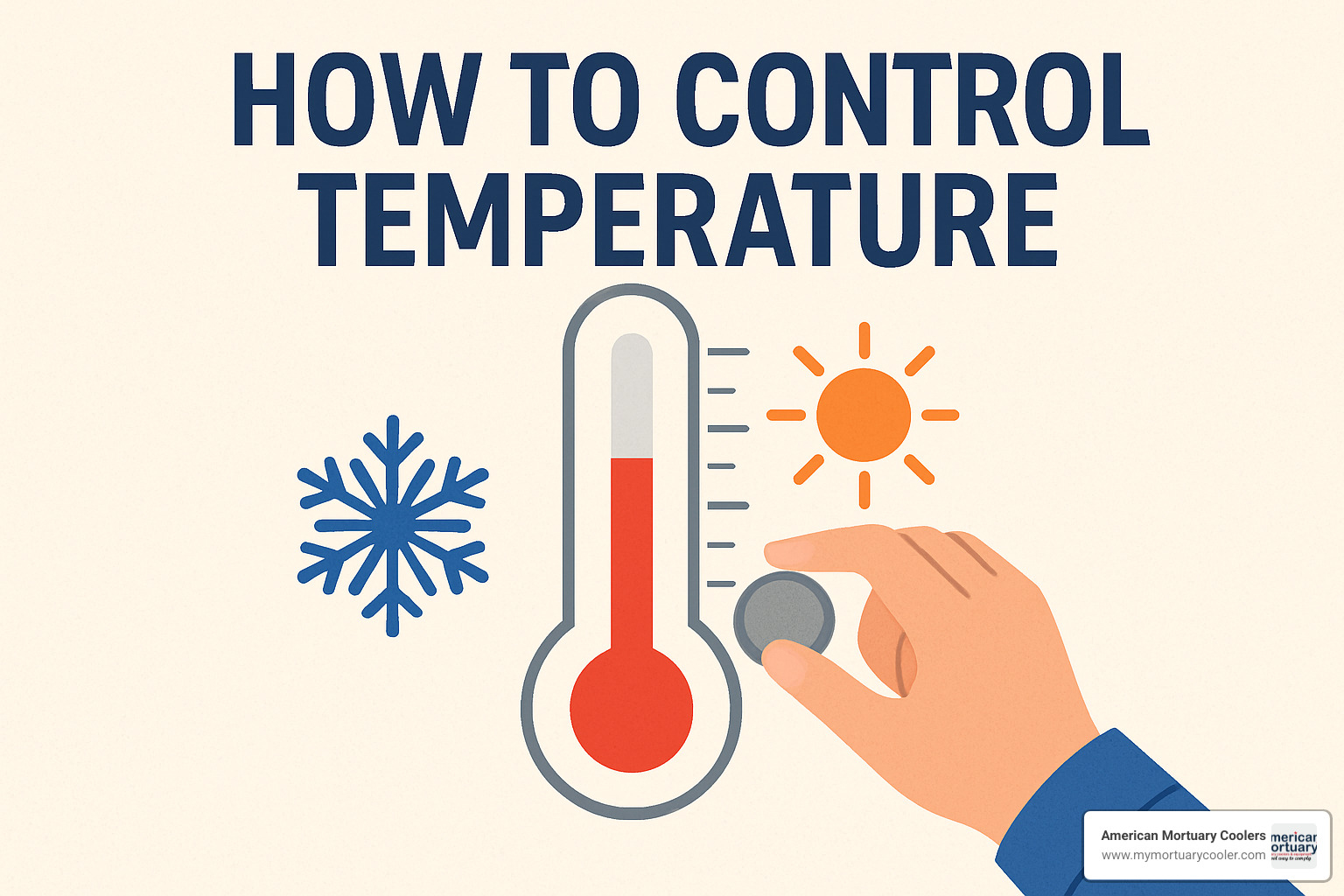
Choosing the right instruments for how to control temperature
Sensor placement separates the pros from the amateurs. For everyday HVAC work, air temperature sensors need to stay away from heat sources, drafts, and direct sunlight. Scientific research on temperature probes shows that proper probe placement makes the difference between reliable data and expensive guesswork.
Walk-in coolers and freezers have their own rules. Place sensors at product level - not up near the ceiling where warm air collects or down on the floor where cold air settles. Temperature can swing 10-15 degrees within the same small space, so measure where your products actually live.
Calibration keeps your instruments honest over time. Even expensive thermometers can drift 2-5 degrees without regular check-ups. The ice-water method gives you a perfect 32°F reference point for quarterly calibration.
Leveraging real-time data to improve how to control temperature
IoT dashboards turn boring temperature numbers into useful insights. Modern systems spot trends, predict when equipment might fail, and automatically adjust settings based on occupancy. Instead of reacting to problems, you prevent them.
Alert systems act like smoke detectors for temperature problems. When readings drift outside safe ranges, you get instant notifications on your phone. This immediate warning prevents product loss and keeps you compliant with health regulations.
Data analytics reveal patterns you'd never notice manually. Seasonal trends, equipment performance cycles, and energy usage patterns help you optimize both comfort and costs over time.
Step 3: Seal, Insulate & Ventilate Like a Pro
Your building envelope is like a thermal fortress - and every crack in that fortress costs you money. The walls, ceiling, floors, windows, and doors that separate your indoor space from the outside world control heat transfer more than any fancy HVAC system ever could.
Commercial buildings consume 22% of the entire United States' energy consumption. That's a staggering number, but it also means there's huge potential for improvement. Most building envelope upgrades pay for themselves through energy savings.
High-R value insulation acts like a thermal blanket for your building. The "R" stands for thermal resistance - how well the material resists heat flow. Higher R-values mean better insulation performance. Your attic insulation typically offers the biggest return on investment because heat naturally rises and tries to escape through your roof.
Air sealing tackles the sneaky culprit that undermines even the best insulation - air leaks. Those tiny gaps around windows, doors, electrical outlets, and ductwork might look harmless, but they add up fast. Weather-stripping and caulking are your first line of defense. These simple fixes often slash energy bills by 10-15% with minimal upfront cost.
| Insulation Type | R-Value per Inch | Best Applications | Cost |
|---|---|---|---|
| Spray Foam | 6.0-7.0 | Air sealing, irregular spaces | High |
| Batt Fiberglass | 3.2-3.8 | Standard wall cavities | Low |
| Cellulose | 3.6-3.8 | Blown-in applications | Medium |
Vapor barriers prevent moisture infiltration that can destroy your insulation and create mold problems. Think of them as raincoats for your building materials.
Building-envelope upgrades that pay back fast
Draft stoppers might seem old-fashioned, but they work. Place them at the bottom of doors leading to unconditioned spaces, and you'll immediately feel the difference. Combined with quality weather-stripping around door frames, these simple upgrades create an effective thermal barrier.
Your windows and doors represent the thermal weak spots in most buildings. Double or triple-pane windows with low-E coatings dramatically improve thermal performance. Yes, the upfront cost stings, but the energy savings and improved comfort make it worthwhile.
Zoned ductwork lets you treat different areas according to their actual needs rather than heating or cooling everything equally. This targeted approach prevents energy waste while ensuring critical areas maintain proper conditions.
Attic upgrades often provide the fastest payback because that's where most buildings lose the most conditioned air. Adding insulation, sealing air leaks, and properly ventilating the attic space can cut heating and cooling costs by 20-30%. More info about refrigeration system basics explains how proper ductwork design in these spaces improves overall system efficiency.
The key to successful envelope improvements is thinking systematically. Seal first, then insulate, then ventilate. Each step builds on the previous one, creating a building that naturally wants to maintain stable temperatures with minimal energy input.
Step 4: Deploy Smart Controls & Efficient HVAC Strategies
Think of modern HVAC control as the brain of your temperature management system. Smart controls learn your facility's patterns and make tiny adjustments all day long to keep conditions just right.
Programmable thermostats are your first line of defense against energy waste. They're like having a dedicated assistant who never forgets to adjust the temperature when you leave for the day. Set your schedule once, and they handle the rest automatically.
Research shows that leaving your furnace fan in the 'on' setting might add about $5 to your monthly bill, but it's often worth every penny. That constant air circulation prevents those annoying hot and cold spots.
HVAC zoning divides your building into separate climate zones. Each zone gets its own thermostat and damper controls, so you're not wasting energy heating or cooling spaces that don't need it.
PID controllers represent the gold standard for precision temperature control. Unlike basic on/off systems that blast heat until they overshoot the target, PID controllers make smooth, continuous adjustments. They prevent the temperature swings that can damage sensitive products or make people uncomfortable.
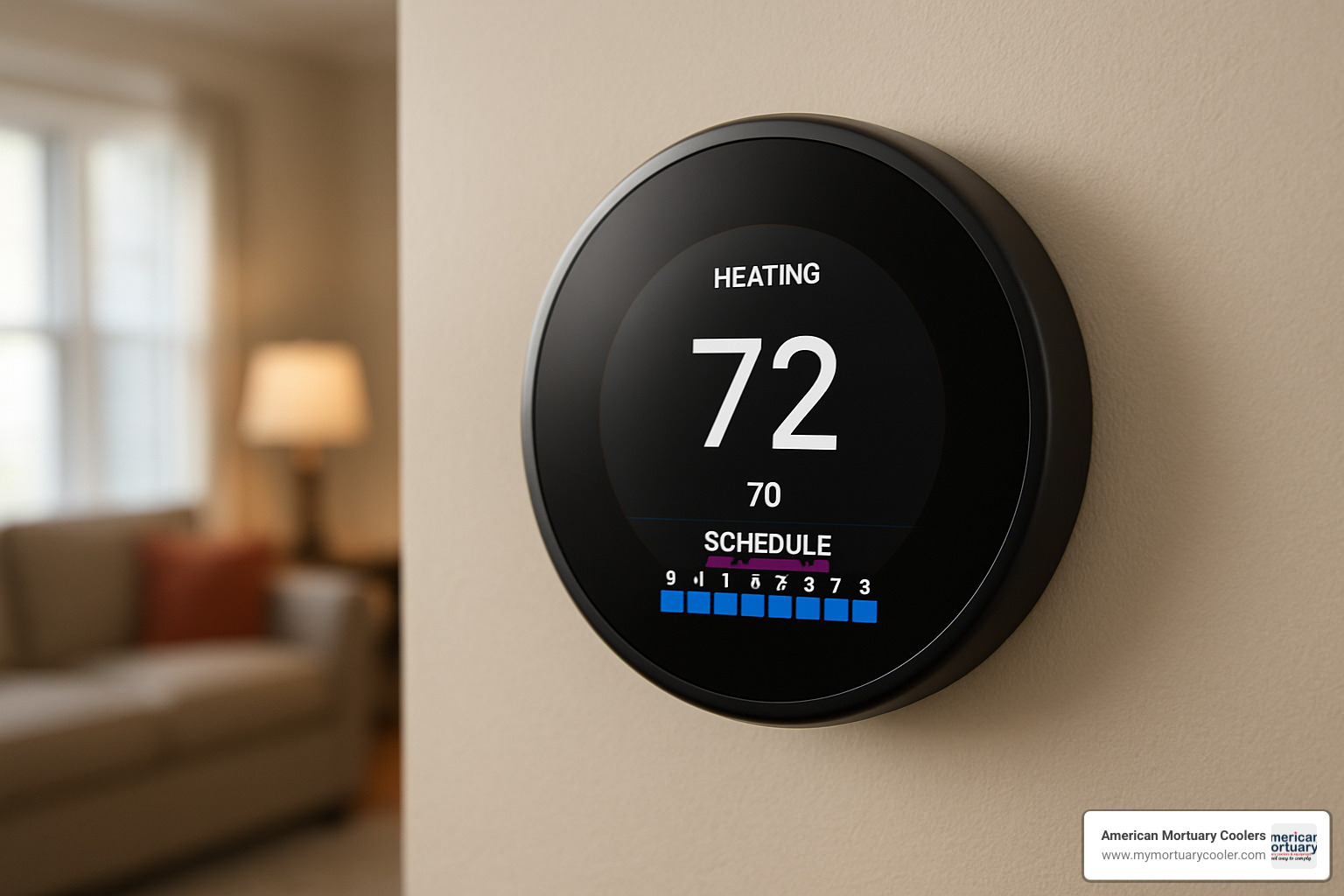
Variable-speed equipment works hand-in-hand with smart controls to provide incredible efficiency. Instead of running at full blast or not at all, these systems can operate at 25%, 50%, or 75% capacity based on actual demand.
Open-loop vs Closed-loop control
Understanding the difference between open-loop and closed-loop control is crucial for mastering how to control temperature effectively. Open-loop control is like driving with your eyes closed - you're applying heating or cooling without knowing if it's actually working.
Closed-loop control continuously watches the temperature and adjusts accordingly. Most modern systems use this approach because it provides stable, predictable results regardless of changing conditions outside.
ON/OFF control is the simplest closed-loop method. The system runs at full power until it hits the target temperature, then shuts off completely. Time-proportioning control improves on this by cycling the system in timed intervals, creating much more stable temperatures.
PID tuning eliminates those annoying temperature swings while maintaining quick response when you actually need to change the setpoint. Poor tuning wastes energy through constant overreaction to small changes.
Automating comfort with AI & occupancy data
Machine learning algorithms study your building's behavior patterns, local weather forecasts, and thermal characteristics to predict exactly when you'll need heating or cooling. This predictive approach means your system can start warming up the building 30 minutes before your staff arrives, ensuring perfect comfort without wasting energy all night.
Facial thermography measures skin temperature to predict individual comfort preferences with 85% accuracy. This breakthrough allows buildings to automatically fine-tune conditions for optimal satisfaction without anyone touching a thermostat.
Occupancy sensors detect when spaces are actually in use. These sensors ensure comfortable conditions arrive just as people do, eliminating waste while maintaining comfort.
The combination of AI and occupancy data creates systems that learn and adapt over time. Scientific research on smart HVAC continues to reveal new ways these systems can improve both comfort and efficiency.
Step 5: Fine-Tune Specialized Environments
Every specialized environment has its own how to control temperature challenges. Whether you're growing prize-winning orchids or preserving someone's loved one with dignity, standard HVAC solutions just won't cut it. These spaces demand precision, reliability, and deep understanding of what makes each environment unique.
The stakes are higher in specialized environments too. A few degrees off in a greenhouse can kill an entire crop. Temperature fluctuations in a data center can crash servers worth millions. And in mortuary applications, precise temperature control isn't just about equipment - it's about honoring families during their most difficult moments.

Keep plants thriving year-round
Plants need more than just the right temperature - they need the perfect balance between temperature and humidity. Vapor Pressure Deficit (VPD) targets measure how much moisture the air can still hold at a given temperature, which directly affects how well plants can photosynthesize and grow.
Shade curtains provide 30-50% light reduction during scorching summer afternoons. Unlike permanent solutions, retractable curtains give you flexibility. Hot day? Pull them closed. Cloudy morning? Open them up for maximum light.
Horizontal Air Flow (HAF) fans eliminate dead zones where hot air gets trapped or cold spots develop. Position them high enough to avoid wind burn on your plants, but low enough to actually move air through the canopy.
Under-canopy heating delivers warmth exactly where plants need it most - at root level. This targeted approach uses less energy than heating the entire greenhouse air volume.
Critical cold storage: morgues & medical
Temperature control in mortuary applications isn't just technical - it's deeply personal. Families trust funeral directors to care for their loved ones with dignity, and that starts with maintaining precise storage conditions between 35°F and 40°F.
Set-point redundancy using multiple sensors and controllers provides the reliability these critical applications demand. If one sensor fails or reads incorrectly, backup systems maintain proper temperatures without interruption.
Alarm systems serve as your early warning network, providing immediate notification when temperatures drift outside acceptable ranges. The best systems include local audible alarms, remote monitoring for after-hours coverage, and backup power supplies.
Energy-efficient panels and insulation make a huge difference in operating costs and temperature stability. Quality door seals and gaskets prevent warm air from sneaking in and forcing refrigeration systems to work overtime.
At American Mortuary Coolers, we've spent years perfecting temperature control for funeral service applications. Our custom-built mortuary coolers maintain rock-solid temperatures across our service areas in Tennessee, Georgia, Illinois, South Carolina, Texas, California, New York, Pennsylvania, and throughout the Midwest, Northeast, Rocky Mountain, Southeast, Southwest, and Pacific regions. We understand that how to control temperature in these applications goes beyond technical specifications - it's about providing families the respect and dignity they deserve during difficult times. The Complete Guide to the Temperature of Morgue Coolers covers everything you need to know about maintaining proper storage conditions.
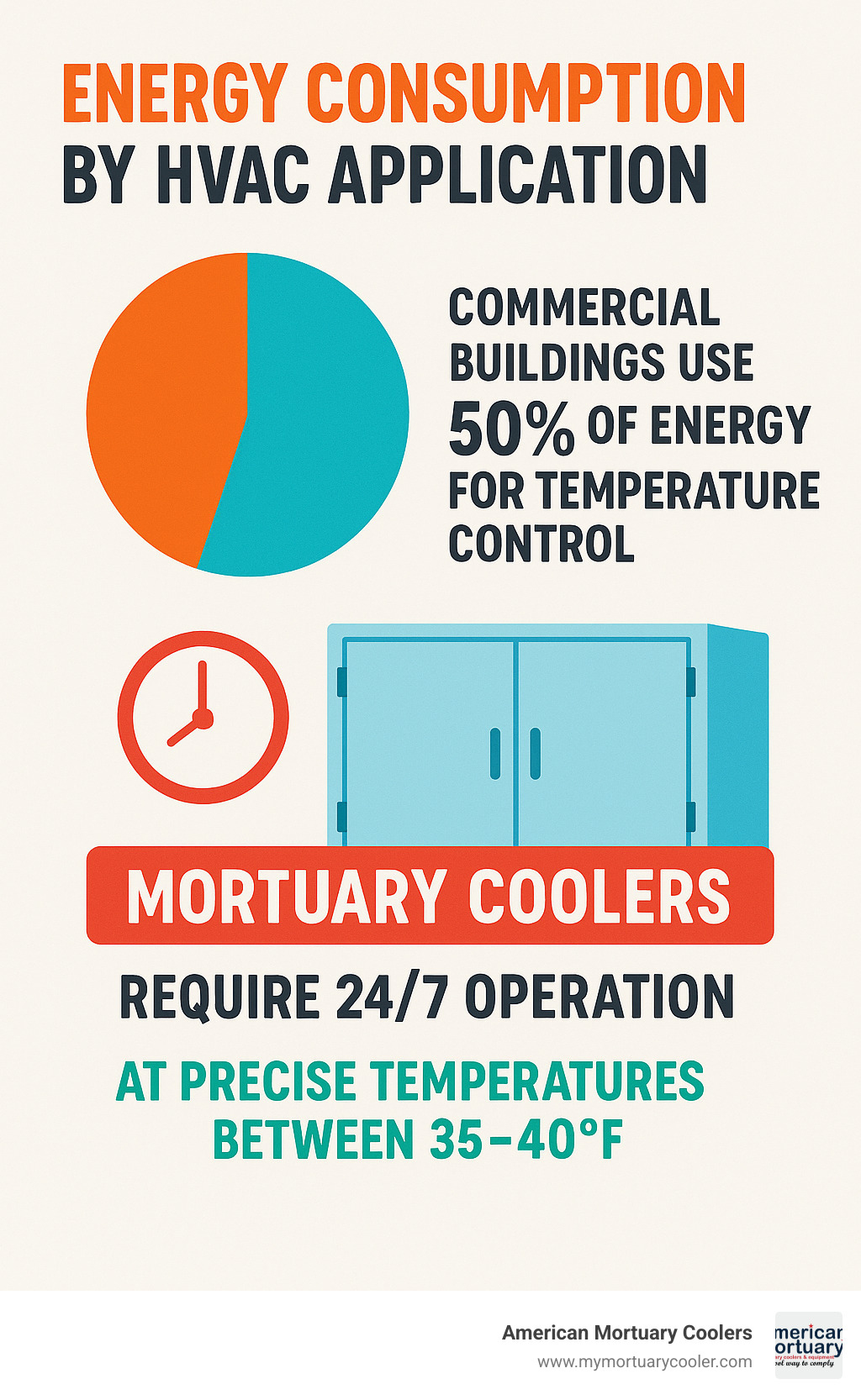
Frequently Asked Questions about Temperature Control
What is the ideal indoor temperature for productivity?
The sweet spot for office productivity falls between 68-73°F (20-23°C) in winter and 73-81°F (23-27°C) in summer. But everyone's different, and what feels perfect to one person might feel too hot or cold to another.
Your body's comfort depends on more than just the thermostat reading. Humidity levels, air movement, and even what you're wearing all play a role in how comfortable you feel.
Research backs up what we've all experienced: when you're comfortable, you work better. Temperatures outside your comfort zone reduce brain power and make you tired faster. Modern smart building systems are getting clever about this - they actually measure how people feel and adjust conditions automatically.
How can I fix uneven heating or cooling in my house?
Uneven temperatures are frustrating, but they're usually fixable. The most common culprits are poor airflow, inadequate insulation, or ductwork that's not properly balanced.
Start with the simple stuff first. Check all your vents to make sure they're not blocked by furniture, curtains, or dust buildup. You'd be surprised how often a couch pushed against a vent creates a cold spot across the room.
Booster fans can push conditioned air to problem areas that your main system struggles to reach. These work especially well for second floors or rooms at the far end of your ductwork.
Here's a trick many people don't know: set your furnace fan to "on" instead of "auto". Yes, it'll cost you about $5 extra per month, but it keeps air moving continuously throughout your home. This prevents those annoying hot and cold spots.
Duct balancing involves adjusting dampers to direct more airflow where you need it most. Understanding how to control temperature effectively often comes down to getting the air to flow where you want it.
Do smart thermostats really cut energy bills?
Smart thermostats absolutely do cut energy bills - typically by 10-15% through smarter scheduling and automatic adjustments. They're like having a really attentive assistant who learns your routine and adjusts things before you even think about it.
The magic happens in how they adapt to your life. Smart thermostats learn when you're home and when you're away, then pre-condition your space just before you arrive. No more heating or cooling an empty house all day.
Many utility companies offer rebate programs that can cut your upfront costs significantly. Combined with the energy savings, most people see their smart thermostat pay for itself within 1-2 years.
The remote monitoring feature is a game-changer too. You can adjust temperatures from anywhere using your phone, which means no more wasted energy when your plans change unexpectedly.
Conclusion
Learning how to control temperature effectively comes down to mastering those five essential steps we've walked through together. Understanding heat flow gives you the foundation, accurate measurement keeps you informed, a solid building envelope does the heavy lifting, smart controls handle the fine-tuning, and specialized tweaks address your unique needs.
After years of helping funeral homes maintain critical temperatures across all 48 contiguous states, we at American Mortuary Coolers have learned something important: every facility is different, but the science stays the same. Whether you're keeping a mortuary cooler at exactly 38°F or maintaining comfortable office temperatures, the principles of heat transfer and control remain constant.
The benefits go way beyond just feeling comfortable. Proper temperature control actually improves your health - it reduces stress on your body, helps you sleep better, and keeps your immune system working at its best. For businesses, consistent temperatures protect your products, keep you compliant with regulations, and create spaces where customers actually want to spend time.
With climate change concerns growing and energy costs rising, getting your temperature control right isn't just smart business - it's becoming essential for sustainability. HVAC systems eat up about half of a building's energy use. When you optimize temperature control, you're not just saving money, you're making a real difference for the environment.
The key is starting with what you can measure and control. Get accurate temperature readings first, then work on understanding how heat moves through your specific building. Once you've got those basics down, you can add smart controls that actually match what your space needs.
For specialized applications like mortuary cooling, don't go it alone. Partner with professionals who've been there before and understand the unique challenges of your industry. More info about refrigeration units can guide you toward equipment that'll actually work for your specific situation.
The investment you make in proper temperature control today pays dividends tomorrow, both in comfort and in cost savings. Whether you're running a funeral home, restaurant, medical facility, or any space where temperature matters, these five steps give you a clear path forward.


















